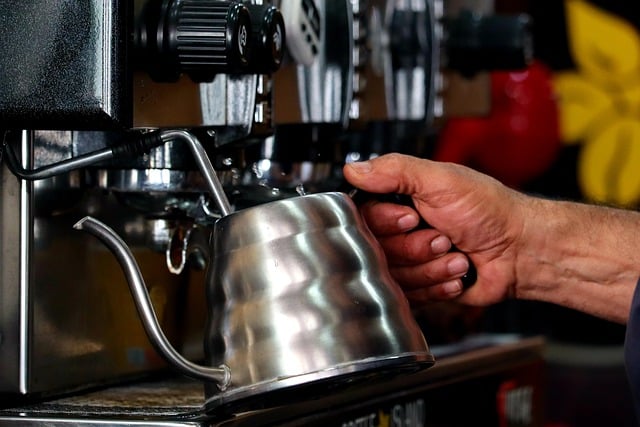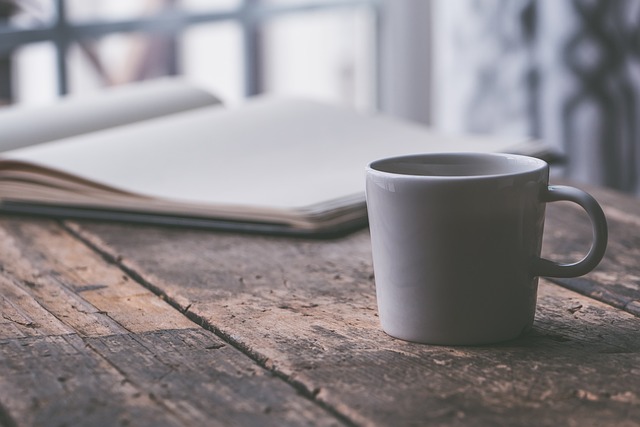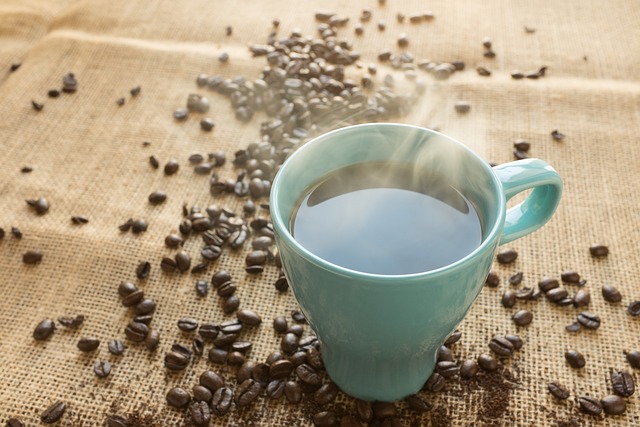- Mastering Coffee Brewing Techniques: A Comprehensive Breakdown
- – French Press vs. Espresso: Optimal Brewing Methods
- – Pour-Over Perfection: Steps to the Ultimate Home Brew
Mastering Coffee Brewing Techniques: A Comprehensive Breakdown

Mastering coffee brewing techniques is a journey through the rich and varied processes that transform beans into beverages, each offering distinct flavors and experiences. Understanding the nuances of water temperature, grind size, and extraction time, for instance, is paramount when using a pour-over method. The precise control over these factors allows you to coax out the full potential of your coffee’s aromatics and taste profiles, resulting in a cup that can rival those served by baristas in bustling cafes.
Similarly, the art of the French press demands attention to detail. A balanced ratio of coffee to water is crucial, as is the timing—steeping for too long or too short a period can lead to under- or over-extraction, respectively. The plunge phase must be executed with deliberate force to ensure a clean separation of grounds from your brew. By mastering these techniques, you can consistently produce a smooth, full-bodied cup with a satisfying mouthfeel and a crema that sits atop like a delicate layer of foam. Each method—from the delicate pour-over to the robust French press—invites you to engage with the coffee, understanding its origins, its character, and how to bring out its unique qualities through careful and considerate brewing.
– French Press vs. Espresso: Optimal Brewing Methods

The art of coffee brewing encompasses a variety of methods, each offering distinct flavors and experiences. Among these, the French Press and Espresso stand out for their rich histories and unique brewing processes. The French Press method, also known as the plunger or press pot, is revered for its full-bodied extraction, allowing coffee aficionados to engage with the nuances of the bean’s flavor profile. This method involves coarse-ground coffee beans steeped in hot water for about four minutes before slowly pressing the grounds to the bottom. The result is a cup that captures the subtleties and complexities of the coffee, without the fine particles that can make it into your cup with other brewing methods.
In contrast, Espresso brewing is a precise and concentrated affair. This Italian import requires finely-ground beans and high-pressure water to extract a small volume of coffee with a thick crema on top. The Espresso machine heats and forces hot water through the tightly packed coffee puck at around 9 bars of pressure, producing a shot that is both potent in flavor and rich in tradition. Mastering the art of pulling a perfect shot involves understanding variables such as grind size, dosage, tamping technique, and extraction time. Each pull can yield a different taste experience, from a robust and bold espresso to one that is lighter and more floral. Both methods, while different in execution, are optimal for their respective outcomes and offer coffee enthusiasts a chance to explore the depths of coffee’s flavor spectrum from the comfort of home.
– Pour-Over Perfection: Steps to the Ultimate Home Brew

Embarking on the journey to achieve pour-over perfection at home involves a delicate dance between water temperature, grind size, coffee-to-water ratio, and technique. Begin by heating your kettle; the ideal water temperature for pour-over brewing ranges between 195°F and 205°F (90°C to 96°C) to extract the best flavors from your coffee grounds. While the water heats, grind your coffee beans to a medium-fine consistency, ensuring each grind is uniform for even extraction.
Place a filter in your pour-over brewer and rinse it with hot water to eliminate any paper taste and to preheat your server. Once prepared, gently shake the brewer to center the filter paper. Pour a small amount of water over the coffee grounds to allow them to “bloom,” which is the process where CO2 is released from the grinds. This step helps prevent channeling and ensures a more balanced extraction. After about 30 seconds, resume pouring, starting from the center and moving outwards in a spiral pattern. The entire brewing process should take about 3 to 4 minutes, resulting in a clear, flavorful cup that brings out the nuances of your chosen coffee beans. Remember to adjust your technique based on the specific coffee you’re using; different beans will require slight variations in these parameters for optimal flavor. With practice and attention to detail, you can master the pour-over method and enjoy a cafe-quality brew right at home.



